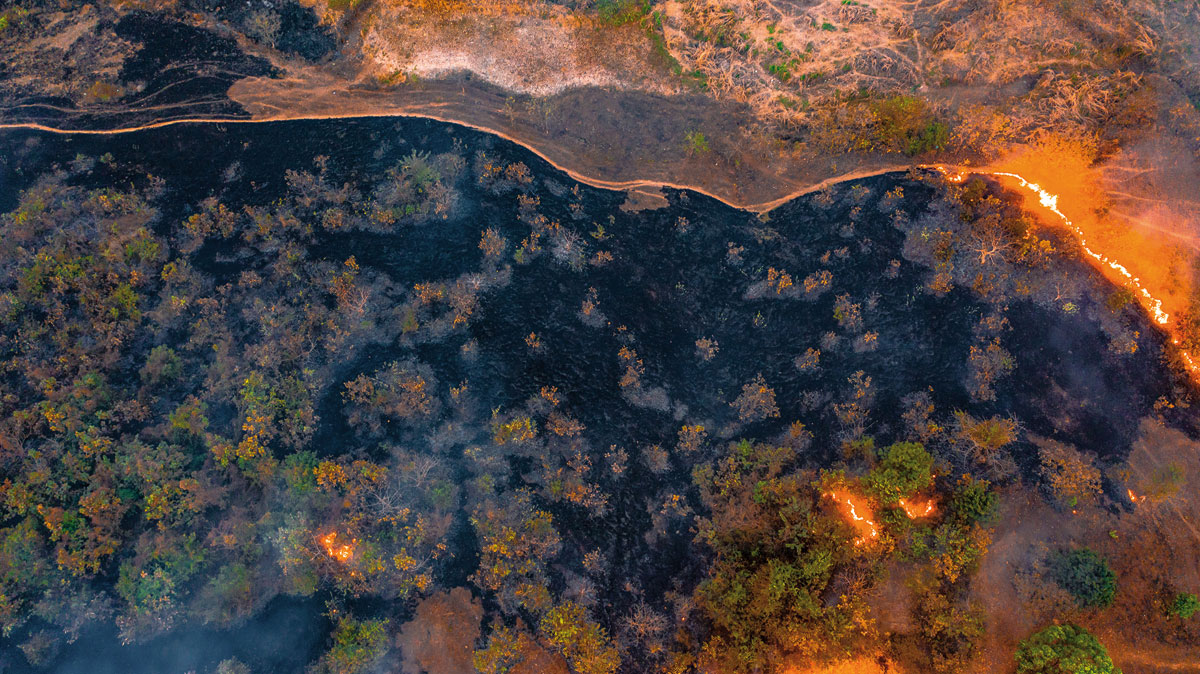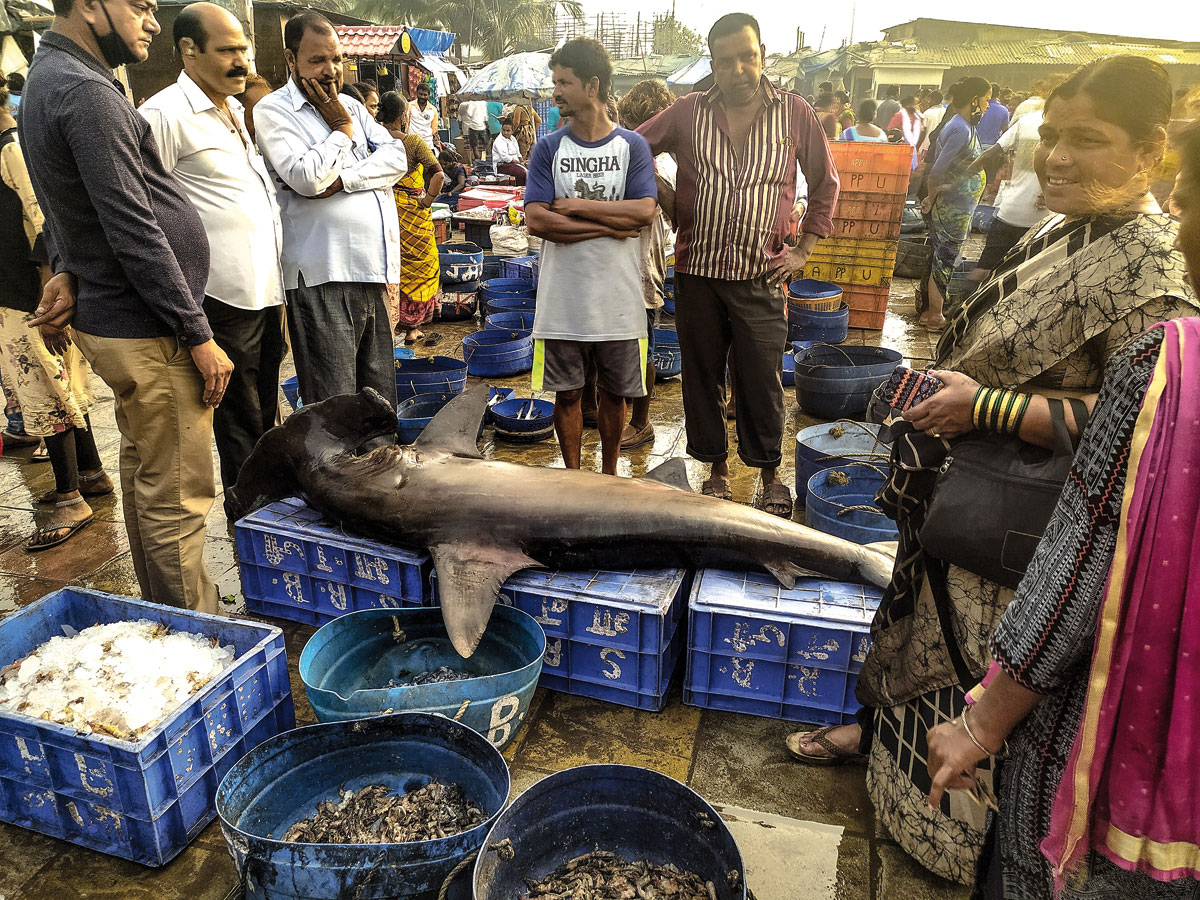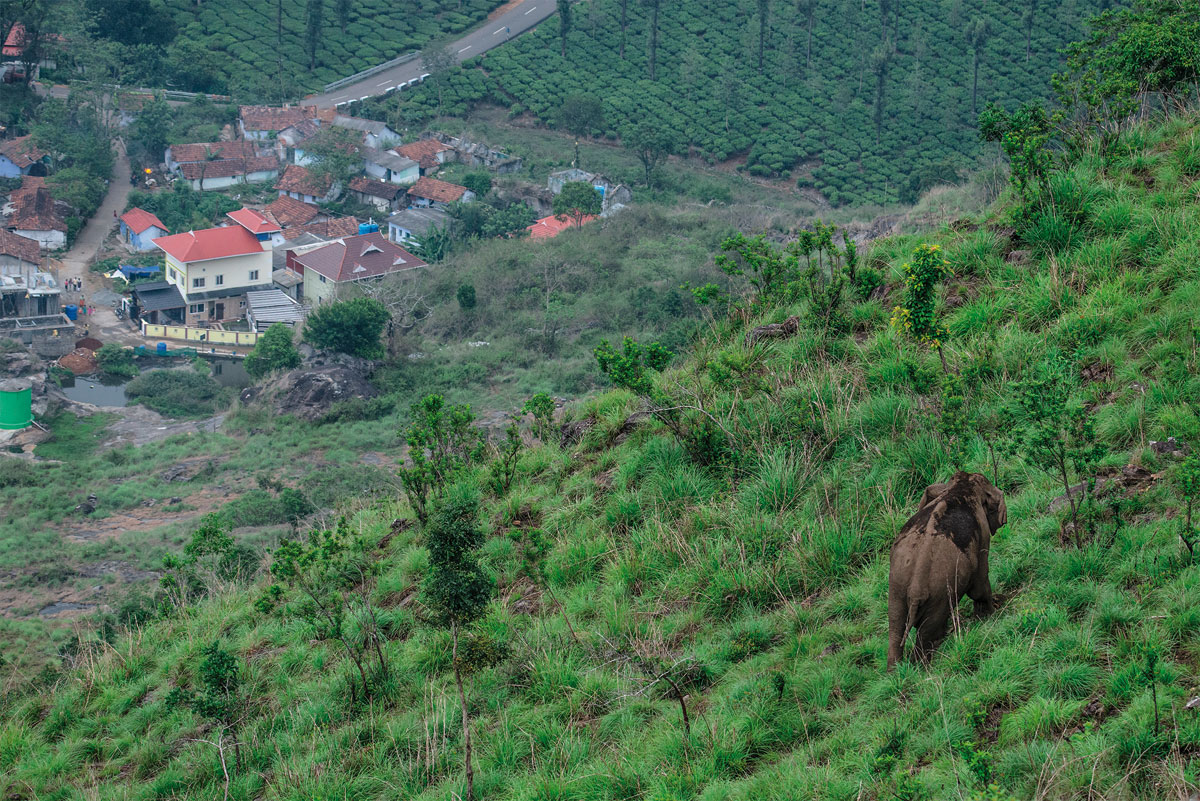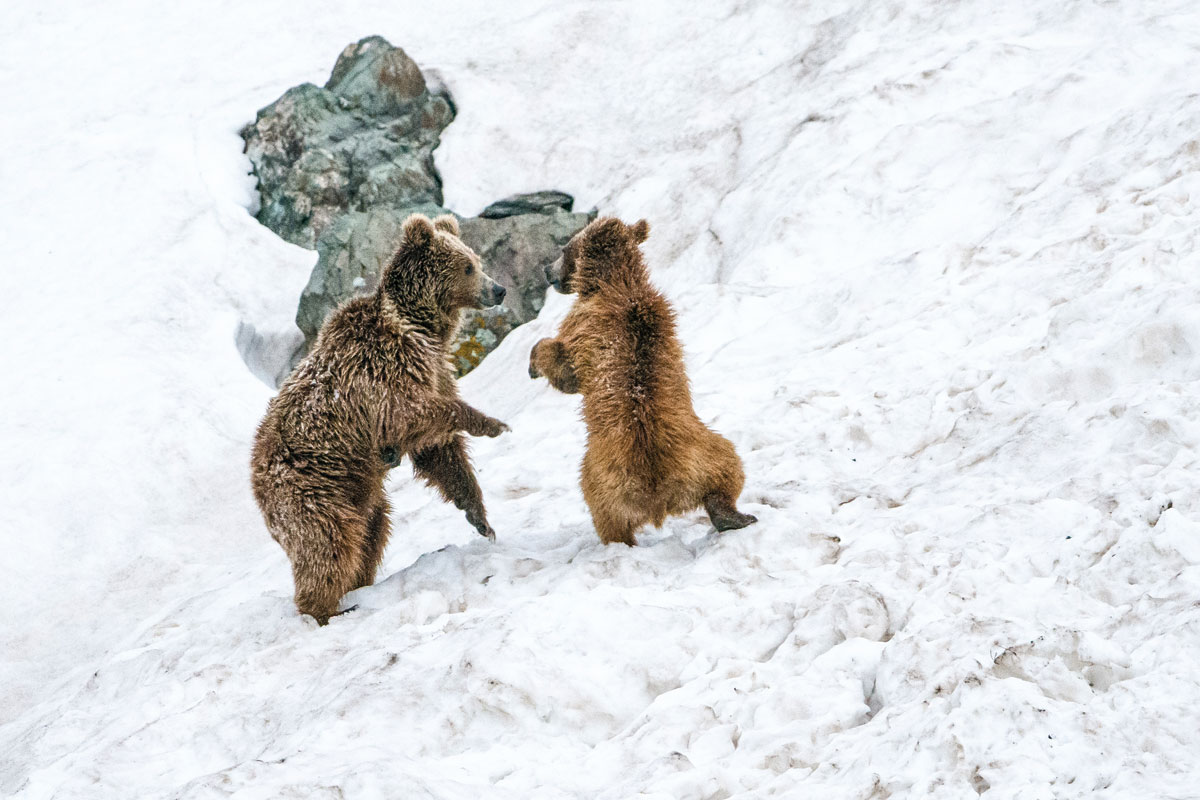Bearing Witness
First published in Sanctuary Asia,
Vol. 43
No. 10,
October 2023
By Bittu Sahgal, Editor, Sanctuary Asia
Though the will to protect wild nature is waning by the minute, India still has some of the world’s finest environmental legislation on paper. Other nations of the world should study India’s laws to understand how to offer legal protection to wild species and habitats. That said, I would not suggest they take a leaf out of our book concerning the will to implement the carefully worded laws that once largely mirrored our ancient attitudes to nature. While one set of people work to rewild India, others bear witness to the fact that, by policy, large tracts of India’s (and the world’s) life-saving ecological assets are being squandered, all trumped by human infrastructures focused on economics, not survival.

Photo: Aniket Thopate.
The Heat is On
This graphic drone image of a forest burning in Badlapur, Maharashtra, India, represents the ongoing fate of the world’s forests as soil moisture evaporates, rainfall patterns become increasingly unreliable and the oil, coal and gas industries keep pumping more and more carbon into the Earth’s atmosphere, turning our once-safe home into a crematorium for species uncounted, including Homo sapiens. What goes around does come around – forest fires are mostly man-made in India, and there can be a marked increase as temperatures soar in coming years.

Photo: Anurag Karekar.
Man Bites Shark
What you see in the image is a hammerhead shark caught off the waters of India’s financial capital, Mumbai, laid out for consumers to buy, slice and forget. The late Bhai Bhandarkar and Rambhau Patil, charismatic leaders of Maharashtra’s Machhimar Kruti Samiti, had convinced the fishing community to unite to protect sharks, corals and mangroves, which were also protected by Indian law. Bhandarkar and Patil have left us. Sadly, sharks and countless other marine species seem poised to follow suit, as their near-shore breeding grounds are under assault by developers of all stripes.

Photo: Aneesh Sankarankutty.
World War III?
A lone tusker seems to look wistfully at tea estates and human dwellings, carved from the forests of Valparai, Tamil Nadu, India, where its ancestors once roamed free. Species conservation is not an animal rights issue, it's a human rights issue! If the elephants go, we go. Respected economists such as Lord Nicholas Stern and Professor Partha Dasgupta have been screaming hoarse about the imperative of protecting wild species of plants and animals as a strike strategy to ward off the worst impacts of our galloping climate crisis. Homo sapiens vs. the rest of all living things is literally World War III, which we have been dreading and which we are destined to lose; unless we live up to our sapiens name and sue for peace with nature.

Photo: Debashis Banerjee.
Bear Necessities
Two brown bear cubs play-fight, just 50 m. from their watchful (out of frame) mother, in preparation for later life when battles for mates and territories will become real. This image shot in Dras, Kargil, Jammu & Kashmir, reveals the snows of the high Himalaya, upon which the future of bears, snow leopards, red foxes, tahr, ibex, marmots, and Black-necked Cranes depend. But, like the ice in the North and South Poles, Himalayan snows too are vanishing like ice cubes in boiling water. And when the ice melts, these animals, adapted to their frozen home for millions of years, will vanish too. As will the naked ape, whose fate is enmeshed with those of the animal and plant species we humans have come to treat as raw material for short-term economic objectives.





